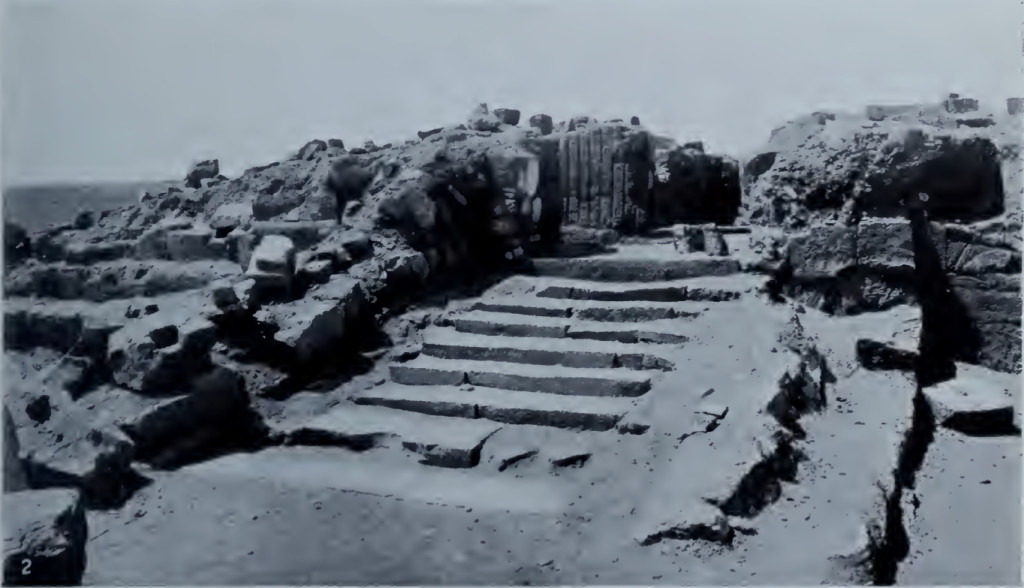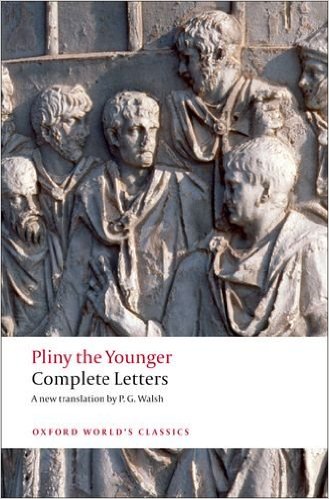![The Table of the Sun God is an article on the Frédéric Cailliaud expedition to the ancient city of Meroë that appeared a 1968 issue of the British educational magazine for children Look and Learn [11]. Image licensed for educational use (LL0362-015-00).](http://www.anecdotesfromantiquity.com/wp-content/uploads/2015/08/The_Table_of_the_Sun_God-782x1024.jpg)
The Table of the Sun God is an article on the Frédéric Cailliaud expedition to the ancient city of Meroë that appeared a 1968 issue of the British educational magazine for children Look and Learn [11]. Image licensed for educational use (LL0362-015-00).
The Table of the Sun is a magical place at the border of legend and history and it was to verify the truth of that that the Persian king Cambyses dispatched a party of spies to the land of the Ethiopians as a prelude to invasion. This, at any rate, is the story as it is related by Herototus, who writes of the miraculous table [1]:
Now the Table of the Sun is said to be something of this kind: there is a meadow outside the city, filled with the boiled flesh of all four-footed things; here during the night the men of authority among the townsmen are careful to set out the meat, and all day whoever wishes comes and feasts on it. These meats, say the people of the country, are ever produced by the earth of itself. Such is the story of the Sun’s Table.
The unnamed city to which Herodotus refers is most likely Meroë, capital of a people that he calls the long-lived Ethiopians [2]. But modern readers will known them better as the Nubians of the Kingdom of Kush (see Footnote 1). When the spies returned to Egypt and reported their findings to Cambyses, who had only recently expanded his empire into that country, the great king became incensed and set out at once on an ill-considered campaign against the Ethiopians (see Footnote 2). But Cambyses’ army ran short on provisions before reaching even a fifth of the way to the land of the Ethiopians from Thebes, and he was forced to march back to Egypt after his soldiers resorted to eating first grass and then one another [6].
I turn now to the reconnaissance mission of the spies (all of which is recounted in ref. [7]), who Herodotus identifies as some men of the Fish-Eaters from the city of Elephantine in Upper Egypt. The party was sent off to Ethiopia to present the king there with a disingenuous message of friendship from Cambyses and the following assortment of gifts: a red cloak, an alabaster box of myrrh, a jar of palm-wine, and a gold necklace and bracelets. But the Ethiopian king saw through the Fish-Eaters’ pretence, and instructed them to report this anti-imperial message to Cambyses:
The King of the Ethiopians advises the King of the Persians to bring overwhelming odds to attack the long-lived Ethiopians when the Persians can draw a bow of this length as easily as I do; but until then, to thank the gods who do not incite the sons of the Ethiopians to add other land to their own.
The bow he then handed over to the Fish-Eaters with instructions to bring it back to Cambyses. This provocation is no doubt what roused Cambyses anger to such a height, at least in the imagination of Herodotus, that he summarily embarked on a reckless invasion of the land of the Ethiopians. Although it will be remembered that his original motive for taking military action against the Ethiopians was to acquire the limitless resources of meat supplied by the Table of the Sun.
The Ethiopian king next turned his attention to the gifts. Upon examining the red cloak and learning of how it was manufactured using a dye, the king declared that the garment was pretending to be what it was not, and was therefore deceitful so far as garments go. He was equally unimpressed with the myrrh once he was made to understand that it is used as a perfume. The palm-wine, on the other hand, he found to be delicious. As regards the gold jewellery, the king was much amused; for he supposed the necklace and bracelets to be shackles and boasted of how he had stronger ones in his country.
So much for the gifts.
The king then proceeded to make a token enquiry about the diet and lifespan of the Persians in an effort to direct the conversation toward the utopian character of his kingdom. This became apparent when the Fish-Eaters, in their turn, asking the same of the king about his people, were told that the Ethiopians lived to be a hundred and twenty or more on a simple diet of boiled meat, milk, and violet-scented water from a local spring. Herodotus attributes the exceptional longevity of the Ethiopians, assuming the reports were true, to the waters of this magical spring (see Footnote 3). At the conclusion of these pleasantries, the Fish-Eaters were conducted on a tour of the spring, a prison where all the men were bound with golden shackles, the Table of the Sun, and finally a curious cemetery of crystal coffins set up outside the town.
What is one to make of this fantastical account of a utopian country at the fringes of the earth?
The people live long and healthy lives in an apparently just society, possesses vast quantities of gold, and are without imperial ambitions. On top of that they have a meadow outside the city which magically generates an abundance of meats each morning. It will also be noted that Herodotus wrote of the Ethiopians that they were the tallest and most beautiful people in all the world.
Modern scholarly opinion traces the origin of these legends back to elaborations on descriptions of the Ethiopians found in Homer concocted by imaginative Greek utopian writers. Herodotus’ role in all of this was to rationalise these legends in such a way that they seemed historical to future generations [5,8]. Herodotean scholar David Asheri attributes the legend of the Table of the Sun in particular to “the hecatombs and banquets of the Ethiopians in Homer, in which the gods participate; and also the image of Ethiopia, for evident reasons, as the land of the Sun.” [5]. This to the best of my knowledge is the gist of the present day scholarly consensus.
But a contrary view that held sway during the first half of the 20th century contends that in Herodotus is contained the earliest surviving, albeit thoroughly garbled, description of Meroë. John Garstang, who led an excavation of Meroë at 1909-10, identified the Table of the Sun with a temple (the Sun Temple [8]) that was found to contain a stone block inscribed with a solar disc in what was once a fertile area nearby the city [9]. However, this identification has been largely discredited by the historian Stanley M. Burstein [10]. The most critical piece of evidence is the age of the Sun Temple, which has been dated to the 1st century of the common era, whereas Herodotus was writing of the Table of the Sun during the reign of Cambyses in the 6th century BC. We may nevertheless entertain the possibility of a connection between the Table of the Sun and the fertile area in which the Sun Temple ruins are found, but admittedly with utmost caution.
Such is the legend and the history of the Table of the Sun.
Footnotes
[1] Herodotus never explicitly locates The Table of the Sun at Meroë, although the classical geographers Pomponius Mela and Pausanias were both quick to draw this identification in summarising his work [3,4]. Modern scholars are more careful. Herodotean scholar David Asheri, for example, cautions that Herodotus may have even been thinking of the mythical land of Nysa [5].
[2] Cambyses succeeded Cyrus the Great on the Persian throne and reigned from 530 to 522 BC. He subjugated Egypt in the year 525 BC.
[3] This is the first mention of the Fountain of Youth in recorded history.
References
[1] The Histories by Herodotus; translated by A. D. Godley (1920), Harvard University Press, Book III, Chapter 18, Section 1. Read Herodotus’ passage about the Table of the Sun at The Perseus Project.
[2] The Histories by Herodotus; translated by A. D. Godley (1920), Harvard University Press, Book II, Chapter 29. Read Herodotus’ passage about the city of Meroë at The Perseus Project.
[3] Pomponius Mela’s Description of the World translated by Frank E. Romer (1998), University of Michigan Press, Book III, Chapter 85. Preview this passage on Google Books.
[4] Pausanias Description of Greece translated by William Henry Samuel Jones and Henry Ardene Ormerod (1918), Harvard University Press, Book I, Chapter 33, Section 4. Read this passage about the Table of the Sun at The Perseus Project.
[5] A Commentary on Herodotus Books I-IV by David Asheri et al. (2007), Oxford University Press, p. 417-9. Preview this passage on Google Books.
[6] The Histories by Herodotus; translated by A. D. Godley (1920), Harvard University Press, Book III, Chapter 25. Read Herodotus’ passage about Cambyses’ disastrous military expedition against the Ethiopians at The Perseus Project.
[7] The Histories by Herodotus; translated by A. D. Godley (1920), Harvard University Press, Book III, Chapter 20-24. Read about the reconnaissance mission of Cambyses’ spies at The Perseus Project.
[8] The Archaeological Sites of the Island of Meroe by The Republic of Sudan National Corporation for Antiquities and Museums (2010), p. 40-1. Read this document at the UNESCO World Heritage Centre website.
[9] Meroë, the City of the Ethiopians: Being an Account of a First Season’s Excavations on the Site, 1909-1910 by John Garstang with an introduction and chapter on decipherment by Archibald Sayce and a chapter on the inscriptions from Meroë by Francis Llewellyn Griffith (1911), Oxford at the Clarendon Press. The original book has been digitised and made available for viewing and download at The Internet Archive; see Chapter VI for a description of the Sun Temple by Archibald Sayce.
[10] Herodotus and the Emergence of Meroe by Stanley M. Burstein, Journal of the Society for the Study of Egyptian Antiquities, 11 (1981) 1-5. This volume is currently out of print, but a scanned pdf file of article has been provided to me courtesy of SSEA-Benben Publications, which I have made available for download here.
[11] The Table of the Sun God by D. Charles Nicolle (1968), Look and Learn Issue no. 362. Read this article at the Look and Learn Historical Picture Library.


